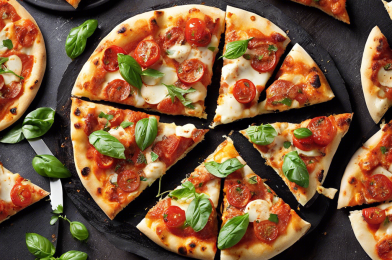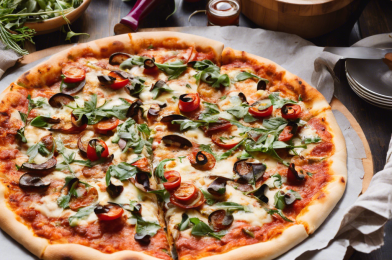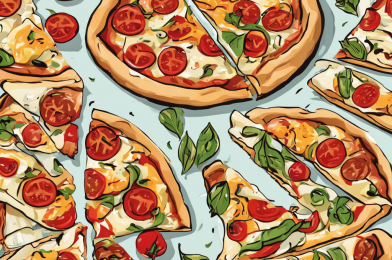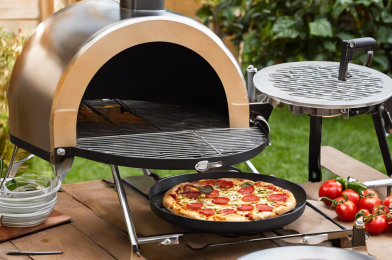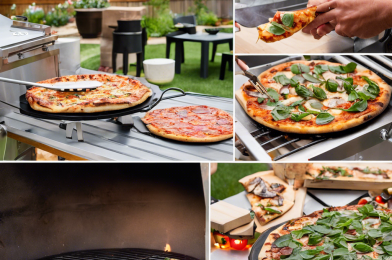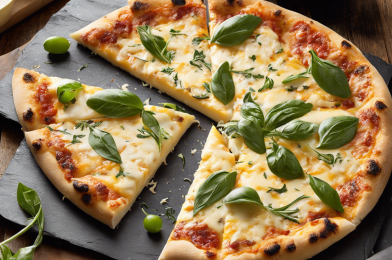Grilled pizza is a treat that many people enjoy, but getting that perfect, crispy crust can be a challenge. With a few simple tips and tricks, you can master the art of creating delicious, restaurant-quality grilled pizza at home.
First, let’s talk about the dough. The key to a crispy crust is starting with the right dough consistency. You want a dough that is slightly sticky but still manageable. Achieve this by using a blend of all-purpose flour and semolina flour. The semolina adds a touch of texture and crunch to the crust. When mixing your dough, aim for a soft and stretchy consistency; overworking the dough will make it tough and chewy. Rest the dough in a warm place to rise; this helps develop flavor and creates a lighter, airier crust.
Next, consider your rolling technique. You want to roll the dough as thin as possible without tearing it. Aim for a thickness of around 1/4 inch; this ensures a crispy base that cooks evenly. If you’re having trouble rolling it thinly, let the dough rest for a few minutes to relax the gluten, then try again. Don’t be afraid to use a little extra flour to prevent sticking, especially if you’re a beginner.
When it comes to grilling, there are a few crucial steps to follow. First, preheat your grill to a medium-high heat. This ensures that the crust will cook quickly, preventing it from burning or drying out. Use a light coating of oil on the grill grates to prevent sticking. Place your rolled-out dough directly on the grill and close the lid. You want to grill the first side until it’s lightly charred and releases easily from the grates—around 2 to 3 minutes. Then, flip the dough and quickly add your toppings, being careful not to overload the pizza, which can make the crust soggy.
Another tip for success is to keep your toppings thin and evenly distributed. Less is more when it comes to grilled pizza. Thick, heavy toppings will weigh down your crust and prevent it from crisping up. Opt for thin slices of meat and veggies, and blot watery ingredients like fresh tomatoes or zucchini with a paper towel before adding them. A light hand with the sauce is also key; too much sauce will make your crust soggy.
For a truly crispy crust, finish your pizza off with a quick trip back to the grill. Once your toppings are melted and bubbling, transfer the pizza back to the grill, and cook for an additional minute or two to add that final char and crunch.
One often-overlooked aspect of grilled pizza is the importance of proper tools and equipment. Having a good-quality grill with adjustable heat settings is essential for controlling the cooking process. Additionally, investing in a pizza stone designed for grill use can help maintain an even temperature and produce a crispier crust. A pizza peel, preferably one with a long handle, is also invaluable for easily transferring your pizza on and off the grill without any mess.
When it comes to flavor combinations, the sky’s the limit, but keep in mind that simpler is often better for grilled pizza. Classic options like a Margherita or pepperoni are always crowd-pleasers, but feel free to experiment with seasonal ingredients and unique flavor profiles. Just remember to prep and slice all your ingredients in advance so you can quickly assemble your pizza once the grilling begins.
Finally, don’t be afraid to experiment and have fun with the process. Grilled pizza is a versatile dish that can be customized to your taste. With a bit of practice and these simple tips, you’ll be well on your way to becoming a grilled pizza master, impressing your family and friends with delicious, restaurant-worthy pies.
